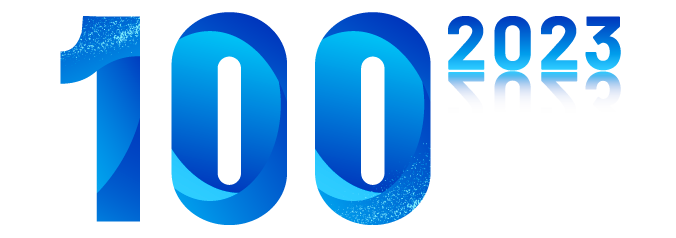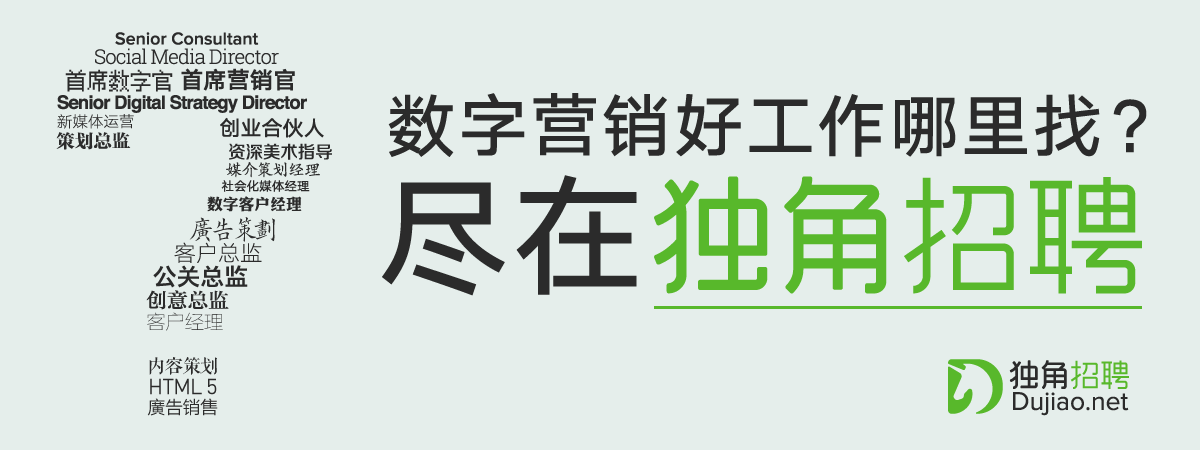著作权归作者所有,转载请联系作者获得授权。作者:李怡,公众微信号【百闻不如怡见】(bwbryj123)
大家好,看到上面这张很宏大的图片了么?
今天给大家发个福利,就是这张 brand building concept map。这是一张综合了对品牌实证主义研究和一系列品牌策略方法的汇总信息图,旨在帮大家更详尽的理解最新的branding理论/方法。资料收集和制图来自于美国乐必扬策略总监 David J Carr。
这张图完成时间是去年 11 月,听说去年就在国外有点小风靡了。不过接近一年后,我才因为朋友的分享看到。下面这篇文字是我翻译他当时发布在medium的初始文章,大家可以了解一下。
下载方法在文章最末。
A Map of Modern Brand Building
In a connected world where new forces and technologies promise to “change everything” at least twice daily, our oldest concept remains the most important: the brand.
在各种新概念、新技术每天都要「改变世界」2 次的当下,我们最古老的话题仍然是那个最重要的词 —— 品牌。
Are brands still relevant when anyone can become one? Are they just totems or fetishes we cling to, exhibiting what Tainter called “diminishing returns”, as large groups of people craft that perfect positioning statement?
当每个人都可以变成品牌时,品牌还重要么?当有一大票一大票的人都在精心产出自己所谓「完美的品牌主张」(过剩的投入会产生类似「收益递减」效应),它是否更像是我们营销人的盲目崇拜?
I’d argue that brands are more important than ever. But what actually makes a brand? How do they create value for businesses?
我认为品牌比以往的任何时候都重要。但到底什么构成了品牌?品牌到底怎样为企业创造价值呢?
Battles are being fought about this in books, research papers, blogs and keynotes. When you listen in on the arguments between the “geeks of big data”, the “cultists of digital engagement” and the “recidivists of the big (TV) idea”, it often seems that they are saying the same thing with different words (and different agendas).
关于品牌究竟怎么创造价值的争论,每天都充斥在书籍、调研论文、博客和 PPT 中。当你看到那些「大数据科学家」、「digital 先驱」和「坚持 big idea 的老创意」们的争论时,你会感觉他们似乎只是在用不同的语言说同样的话而已。
Perhaps George Box can have the last word on this?
也许我们可以用 George Box 的话来形容这种情况:

“All models are wrong but some are useful” — George E. P. Box
「所有的模型都是错的,但部分是有用的」
(P:所有的理论都只能部分模拟真实世界的规律,而不能 100% 解释真实世界的规律,但也不能否认这些理论是有用的,尤其是用来解决现实问题)
In the spirit of Box, and after a few chats with some colleagues at DigitasLBi and others (accompained by my scribbling of flows and diagrams), I thought I’d try to bring some of this debate — and more importantly evidence — together in a concept map.
本着「Box」的精神,在和一些同事在 DigitasLBi 和一些其他人交流之后,我想我应该试着把一些争论,以及更重要的一些证据,一起汇总在一个 concept map 中。
It’s a complex map of a simple truth: Distinctive, emotionally-powerful work that cuts-through with more buyers than your competition, consistently and in the long -term, builds great brands and revenue.
这是张关于简单事实的复杂概念图:那些能比竞争对手吸引更多购买者的,更显著的、富有情感力的品牌内容,能够持久的在很长的时间里(为企业)创造伟大品牌和红利。
The gut feelings of the classic creative directors and planners — the Trotts and AdContrarians — were right. They were also wrong.
擅长运用直觉的 4A 创意总监和策略人员们 —— 特劳特们和广告反对者们 —— 他们是对的,但他们也是错的。
We shouldn’t hide from complexity but embrace it and make it work. Simple in its most ideal form, is the product of a concerted process that begins with embracing complexity.
我们不应该逃避复杂性,我们应该拥抱它,让它发挥作用。「简单」正是从拥抱复杂性开始。
Hunting for a single guaranteed formula for success is a fool’s errand. Rosenzweig wrote in The Halo Effect: “Anyone who claims to have found laws of business physics either understands little about business, little about physics or little about both.”
寻找万能成功公式的行为是徒劳的。Rosenzweig 在《光环效应》中写道:任何声称找到商业、物理学规律的人,要么对商业知之甚少,要么对物理学知之甚少,要么对两者都知之甚少。(business physics 是什么?欢迎补充)
The new data and empirical evidence we have for brand building can help us with clients and their boards (see Sharp, Field & others) beyond “trust me” and a couple of “selectively edited” case studies. The recent research and analysis that has gone on into effectiveness has also helped us better understand “HOW” the work works. But we must remember that we are complex people and businesses are complex systems that are forever evolving.
我们为品牌建立的新的数据及实验性证据收集方式能更好的帮助企业,远胜于单纯「信任某个创意大神」或那些选择性展示的案例分析。我们最近的研究和分析也帮助广告人更好地理解这项工作是如何运作的。但我们必须记住,我们是复杂的人类,而企业是永远在演变的复杂系统。
To paraphrase some great strategists: “Your brand doesn’t survive contact with the (consumer) enemy” or “everyone has a brand until you get punched in the face”.
套用一些伟大策略人的话:「在与敌人(消费者)的接触后你的品牌将不复存在」。还有一句话是:「每个人都有自己的品牌,直到你被打脸」。
Going forward brand data should be an inspiration and a support, but also we must be mindful that all data is contaminated and biased (even/especially IPA datasets drawn from Effectiveness Papers). Until the AIs take over next tuesday we need to be able to use our judgement and the evidence to our advantage and “support the irrational, risky, outlandish decisions that our heart is telling us to make”. This way we can build the brands and brand experiences with positive impact that will be relevant in the future.
往下走,品牌的大数据会更有启发性更有辅助作用,不过我们也要注意所有的数据依然都是带有偏见和污染的(既是/甚至是IPA英国广告协会的数据库)。除非等到 AI 开始接手我们的工作,我们营销人仍然需要用我们的判断结合数据来「支持那些非理性的、冒险的、拍脑袋的决策」。这样做我们可以更好的建设品牌和品牌体验,带去更积极的未来影响。
This concept map is only a quick survey of some of the great thinking that is going on in our industry. It is not exhaustive. You could explode any one of the nodes and go deeper. You could wire some of it differently. It’s not right. It’s not (all) wrong.
这张概念地图只是我们对行业内伟大思想的快速摘录。而且并没有穷尽。你可以仔细去探究其中任何一个点。你也可以用不同的方式把它们连起来。没有绝对的对,也没有绝对的错。
PS
The “Map of Modern Brand Building” concept map is split in two: the bottom is “How Brands shift demand and contribute to profit”, the top is about “Designing and managing a brand”.
这份《现代品牌地图》可以分成上下两部分。底部是具体去讲品牌怎样 shift demand 和最终提升企业利润( 即 how brands grow);顶部内容是说怎样设计和管理品牌。
回到这份策略图纸,我觉得大家不要被一种认知偏见覆盖,就是【哇这个方法论/模型/框架好厉害好厉害】,好像有了它你就会变得很厉害。
这张图仅仅只是提供了一个学习的机会,学习西方市场营销圈比较认可的理论和品牌构建思路。
其中有几个我认为的重点:
1.理解中心语句:A brand is a set of associations that combine with heuristics in the mind of consumers to shift demand.
我的翻译供大家参考吧:品牌是一系列联想的集合,与受众心智中的启发法共同作用,为企业创造利润。
OK,这里有个关键词,启发法 heuristics 是什么?简单来说启发法是人类进行决策的快捷方法。人们通过对大脑中经验/记忆的搜索,快速得出结论,从而避免进行研究、对比等大量的脑力活动。
它无时无刻不在,比如今天下午茶喝什么?如果你最近才路过一次一点点,或喜茶,你的大脑就更容易调出相应的「景象」,你也更容易偏向选择这家奶茶店。比如你的上级找理论给你解释问题时,他也一定会选择他记得最牢或者是最近才看见的道理。
对品牌的意义就在于,你知道人的任何决策都是来自于其记忆结构(memory structure),与你品牌相关的记忆结构越显著就越可能影响消费者的决策。
2.下半区基本是是我一直推崇的《HOW BRANDS GROW》的思维导图。
有几个关键概念:distinctiveness,可以被翻译成“可辨别性”。Branding的意义之一就在于让消费者选择 A,而不是B,所以一切能代表A的事物其实是前所未有的重要,它们包括:品牌名称、定位口号、符号、颜色、声音等一系列的元素。这些元素是区别A与B的显性特征,即 uniqueness。
而想要被「可辨别/识别」,品牌还需要通过长期、连贯一致的重复来增强普遍性,也就是 prevalence。在品牌识别和传播上做好 uniqueness+prevalence,是让品牌「被容易辨别」的重要手段。那些手段也在这张图的延伸中。
但只有 meaningful 够么?
我举个例子,有一个 distinctiveness 非常强的东西你我绝对都见过:

这种在各留流量平台泛滥的页游广告完美的具备了独特性 uniqueness —— 有记忆点的代言人和游戏画风,以及普遍性 prevalence —— DSP 的重复投放。但对我的读者们会有效果么?我认为是没有的,这正是我们需要 meaningful 的原因。
在 CONCEPT MAP 中,这个 meaningful 有很多指向,但我个人觉得它几乎可以与 personal relevance 挂钩。
真正能够让一条信息/一个品牌与某人相关,方法 1 是 context,我理解为任务。我们每个人都在完成任务,不管是吃饭还是买东西。当你不需要装修时,怎么推送油漆广告你也很难在意和记住,但当你有这个任务时就会主动获取相关信息。
方法 2 是 identity:你作为个体或群体的身份认同。就如同 nike 这种善于讲故事的品牌,它的商业广告不会去说产品解决你的什么任务/难题,而是塑造你们同一种 identity 去加深关联性。

当然,我们也可以说如果拥有了 relevance,那前面说的 distinctiveness 等等要素也会自动满足呀?这点确实是没有定论的,大脑还没有被研究透彻到我们可以进行MECE的分类。
当然,这张 MAP 提到的知识点还有很多值得讨论/纠正,这是需要大家结合其他资料自己探索的,我觉得可以记住那句话 —— 一切模型皆错,我们需要取其精华以用。
我分享这张图的初衷很简单,我不喜欢藏着掖着:我希望行业人士都拥有更科学的方法论基础。
我的工作中总是充满了以下经历:「跟创意搞这句话是概念还是那句话是概念」、「跟客户挣是 slogan 还是 idea」、「尝试说服大家我们的创意为什么需要更显著」blablabla...无论是概念共识还是理论基础,如果花费这么多时间在这些事情上真的是很头疼。
希望通过分享的资料,乙方可以提高自己的专业度,而甲方可以更完善的思考,从而有更多有效率有共识的甲乙方对话。
source:https://medium.com/@djc1805/a-map-of-modern-brand-building-366476f7c552
map:链接: https://pan.baidu.com/s/1o8n4WDs 密码: 6yf2










 浙公网安备 33010502000682号
浙公网安备 33010502000682号